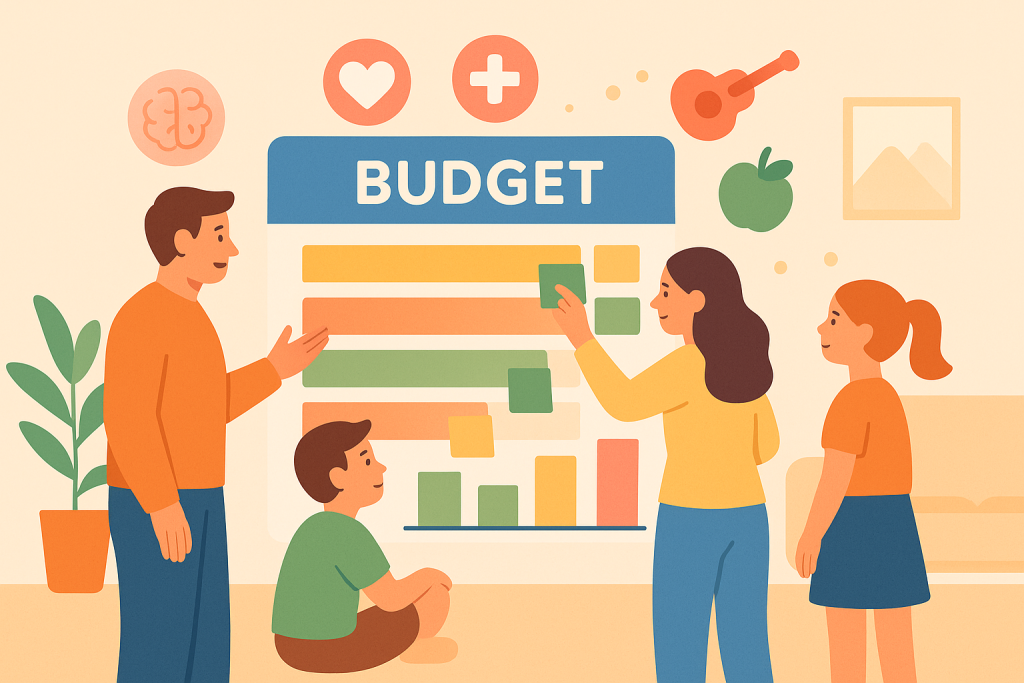In the bustling economic landscape of the United States, managing personal finances can be both a cumbersome and pivotal task. Behavioral budgeting has emerged as a transformative approach that aligns spending habits with one’s well-being objectives.
This methodology emphasizes the profound impact of financial decisions on mental and emotional health, encouraging individuals to make thoughtful choices that enhance their quality of life. By integrating psychology with budgeting, we can uncover deeper insights into financial behavior, promoting a more holistic approach to managing our money.
Understanding behavioral budgeting

The notion of behavioral budgeting is rooted in the alliance of financial management with psychological insights. Traditional budgeting often focuses on numbers and percentages, whereas behavioral budgeting emphasizes emotional and psychological triggers influencing financial decisions.
This innovative strategy takes into account the intrinsic motivations and emotional responses that govern our spending patterns, spotlighting the need for introspection and self-awareness in financial management. With this approach, individuals can move beyond mere calculations, fostering a deeper connection with their financial objectives by understanding ‘why’ they spend rather than just ‘how much’.
The psychology behind spending
Spending is not solely a mechanical exercise of exchanging money for goods or services; it’s deeply intertwined with our psychological state. Emotional factors such as stress, happiness, or even peer influence can significantly sway spending habits. For instance, retail therapy is a common behavior where individuals purchase items as a means of coping with stress or depression.
Behavioral budgeting encourages individuals to recognize and address these emotional triggers, offering a method to replace impulsive monetary actions with deliberate choices that support long-term goals. By understanding and modifying these psychological patterns, individuals can achieve a more balanced financial lifestyle.
Aligning financial goals with life satisfaction
Incorporating behavioral aspects into your budget can also lead to enhanced life satisfaction. When financial goals are aligned with personal values and well-being, they are more likely to be achieved, delivering greater contentment.
For example, instead of striving for purely materialistic goals, like purchasing luxury items, behavioral budgeters prioritize experiences or investments that provide sustained joy and growth. This shift from an acquisition-focused mindset to one that values meaningful life experiences can drastically improve one’s overall fulfillment.
Implementing a behavioral budgeting strategy
Transitioning to a behavioral-centered budgeting approach requires intention and mindfulness. One of the foundational steps is to recognize personal values and aspirations, forming the basis for making informed and deliberate financial choices. By doing this, individuals can create a strategic plan that reflects their unique needs and priorities, leading to empowered decision-making.
Key aspects of this implementation involve setting clear and achievable financial goals, monitoring spending habits, and regularly reassessing these objectives to ensure they continue to align with changing life priorities and circumstances. This dynamic method ensures that financial planning becomes a sustainable, adaptive process.
Practical steps for success
For those eager to embark on a path aligned with behavioral budgeting, practical steps can help streamline the process. Begin by tracking your spending to identify patterns and triggers; understanding where your money goes is crucial. Next, set well-defined, value-centric objectives, such as saving for a once-in-a-lifetime travel experience or investing in education.
Additionally, formulating a flexible budget that accommodates both your necessities and well-being goals is essential. Finally, regularly review and adjust this financial plan to ensure it continues to reflect your aspirations and lifestyle changes. These steps, aligned with behavioral insights, will guide you towards financial serenity and satisfaction.
Reflect and adapt
Frequent reflection on spending choices and ongoing adaptation are integral components of the behavioral budgeting process. Life circumstances and personal priorities will naturally evolve, and so should your budget. Reassessing financial goals and strategies periodically allows for this growth, ensuring your financial framework continuously supports your well-being.
This reflection fosters a greater sense of self-awareness and discipline, helping to curtail unnecessary expenses and focus on what truly matters. With these insights in hand, behavioral budgeting transforms into a powerful tool for long-term financial success and personal fulfillment, adapting to your evolving journey.
In conclusion, behavioral budgeting offers a comprehensive approach to personal finance, one that prioritizes emotional and psychological insights over traditional numerical analysis. By understanding the psychological motivations behind spending and aligning financial goals with individual values, this strategy fosters sustainable financial health and life satisfaction.
The practical steps and reflective nature of behavioral budgeting ensure that it’s a dynamic, adaptable tool, ready to meet the challenges of our ever-changing lives. By embracing this approach, individuals can cultivate a more meaningful relationship with their finances, enhancing overall well-being.
